On October 29, as part of the communication and knowledge transfer activities of the BlueWWater project, the workshop “Innovation and Cooperation in Tackling Emerging Contaminants: From Detection to Action Towards Sustainable Water Management” was held at the CETMAR conference hall in Vigo.
The event brought together around 60 participants from both the public and private sectors, including representatives from public administrations, agencies responsible for water quality control and management, laboratories, treatment companies, technology firms, research centers, universities, and technological institutes. Many of the attendees are members of the NOR-WATER Network, a collaborative initiative dedicated to the detection and treatment of emerging contaminants in the waters of Galicia and Portugal, which currently includes more than 70 associated entities.
The workshop served as a forum for sharing knowledge and experiences, showcasing the main results of the BlueWWater project and discussing the current challenges faced by the water sector regarding emerging contaminants.
Opening Session
The event was inaugurated by Rosa Chapela, Director of CETMAR, and Pablo Otero, Director of the Oceanographic Center of Vigo of the Spanish Institute of Oceanography (IEO, CSIC), who welcomed participants and presented the scientific and institutional framework of the workshop.
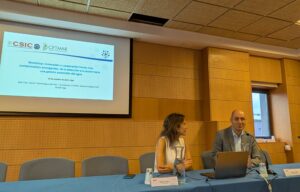
Fig. 1. Rosa Chapela and Pablo Otero inaugurating the event.
Next, Marisa Fernández (CETMAR) presented the objectives and main activities of the BlueWWater project, highlighting the relevance and potential of this cross-border cooperation consortium, which has made the organization of this workshop possible.
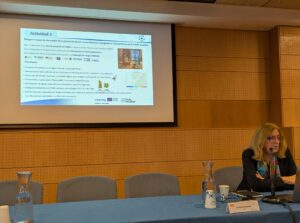
Fig. 2. Marisa Fernández presenting the BlueWWater project to the audience.
Block 1. Context and Regulatory Framework
To open this first block of presentations, Rosario Rodil (University of Santiago de Compostela, USC) gave an overview of the current state of emerging contaminants of concern in the aquatic environment. She emphasized the need to strengthen monitoring of new compounds whose effects on human health and marine ecosystems are still not fully understood.
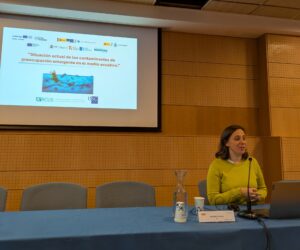
Fig. 3. Rosario Rodil reviewing the current status of emerging contaminants in aquatic environments.
Then, Laura Díaz (Labaqua) presented a study conducted in several hospitals in Madrid on the presence and potential impact of pharmaceuticals in hospital wastewater, underlining the need to consider specific pretreatments before discharge into the public sewage system.
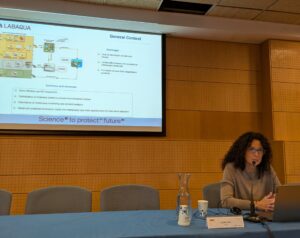
Fig. 4. Laura Díaz (Labaqua) presenting her study on pharmaceuticals in wastewater from several Madrid hospitals.
Block 2. Detection and Monitoring
The next session began with a presentation by Teresa Neuparth (CIIMAR), who discussed the use of ecotoxicological tools to assess the risks of emerging contaminants. She described the different levels of analysis — from in vitro bioassays to the integration of ecological and hydrodynamic data into environmental prediction models.

Fig. 5. Teresa Neuparth showing results on endocrine effects in zebrafish.
Following this, Isabel Iglesias and Miguel Santos (CIIMAR and Faculty of Sciences, University of Porto) showcased the application of hydrodynamic, Lagrangian, and ecological models for environmental impact assessment. Iglesias explained how field sampling is used to prepare and validate models, while Santos stressed the importance of integrating ecological, experimental, and hydrodynamic data to better understand environmental pressures on ecosystems.
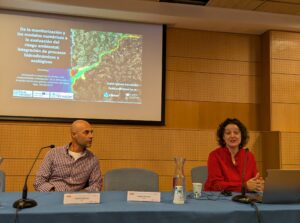
Fig. 6. Isabel Iglesias and Miguel Santos presenting different modeling approaches for environmental impact assessment.
The block concluded with a roundtable discussion moderated by Juan Bellas (Vigo Oceanographic Center, IEO-CSIC), which provided a space for exchange and reflection among the speakers, who shared their perspectives and addressed questions from the audience.
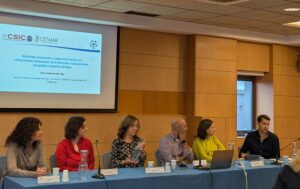
Fig. 7. Roundtable discussion with Laura Díaz, Isabel Iglesias, Teresa Neuparth, Miguel Santos, Rosario Rodil, and Juan Bellas.
Block 3. Advanced Treatments
After the coffee break, Ana Isabel Gomes (Faculty of Engineering, University of Porto) opened the block on advanced treatments with a presentation on technologies for removing microcontaminants from urban wastewater. She explained the differences between physical and chemical treatments and emphasized the importance of quaternary treatments, a key aspect of the new Urban Wastewater Treatment Directive (UWWTD). Gomes also highlighted that retaining contaminants does not always mean eliminating them completely, as the management of by-products remains a major challenge.

Fig. 8. Ana Isabel Gomes presenting data on the most common contaminants, pharmaceuticals, and plastic additives found in wastewater samples from the BlueWWater project.
Then, Hugo Quintana (CETAQUA) presented how WWTPs (Wastewater Treatment Plants) are adapting to the new UWWTD, and the technologies being implemented, such as SeMPAC (a membrane bioreactor combined with activated carbon). He also shared pilot experiences in wastewater reuse for irrigating green areas and firefighting.
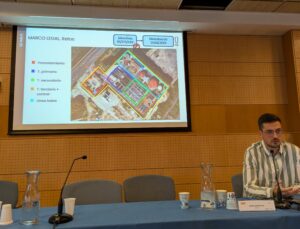
Fig. 9. Hugo Quintana during his presentation.
Block 4. Cooperation, Management, and Science Communication
The final block began with Olga Carretero (CETMAR) presenting the NOR-WATER Network, a public-private, multidisciplinary collaboration platform created under the previous NOR-WATER project — the predecessor of BlueWWater. Olga highlighted its role as a bridge between institutions, researchers, companies, and operators involved in water quality management and emerging contaminant control.

Fig. 10. Olga Carretero presenting the NOR-WATER Network.
Next, Anxo Mena (CETMAR), representing the PROTECMA Technological Platform, discussed its role as a tool for disseminating results and connecting with end users — including plant managers, public administrations, private companies, and citizens. He emphasized the importance of such platforms as drivers of public-private cooperation in environmental risk prevention and management.

Fig. 11. Anxo Mena presenting the PROTECMA platform.
The last talk was given by Uxía Tenreiro (Vigo Oceanographic Center, IEO-CSIC), communication and outreach specialist, who reflected on how to communicate science without creating alarm or oversimplifying, offering strategies and key messages for bringing scientific results closer to society in a clear, rigorous, and engaging way.
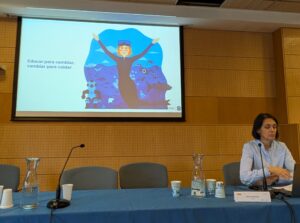
Fig. 12. Uxía Tenreiro speaking about science communication strategies.
The day concluded with a second roundtable, again moderated by Juan Bellas, which fostered debate and active participation. Speakers from this final block shared their reflections and answered audience questions before closing the event.
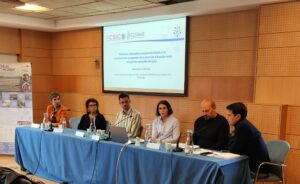
Fig. 13. Second roundtable: Ana Isabel Gomes, Olga Carretero, Hugo Quintana, Uxía Tenreiro, Anxo Mena, and Juan Bellas.
The roundtables underscored the need to move toward a more integrated and coordinated management of emerging contaminants, strengthening collaboration among research, regulation, and operational management. Participants highlighted the importance of harmonizing regulatory frameworks, improving monitoring and environmental risk assessment, and promoting the development and application of effective treatment technologies.
Additionally, the discussions stressed the value of cross-border cooperation and science communication as key tools for bridging the gap between research and society and for encouraging sustainable practices in water use and management.
The presentations used during the workshop are available for consultation:
1. The BlueWWater Project. Marisa Fernández – CETMAR
3. Emerging contaminants in the environment: context, legislation and environmental applications. Laura Díaz – Labaqua
5. From monitoring and numerical models to environmental risk assessment: integrating hydrodynamic and ecological processes. Isabel Iglesias – CIIMAR / Miguel Santos – FCUP
